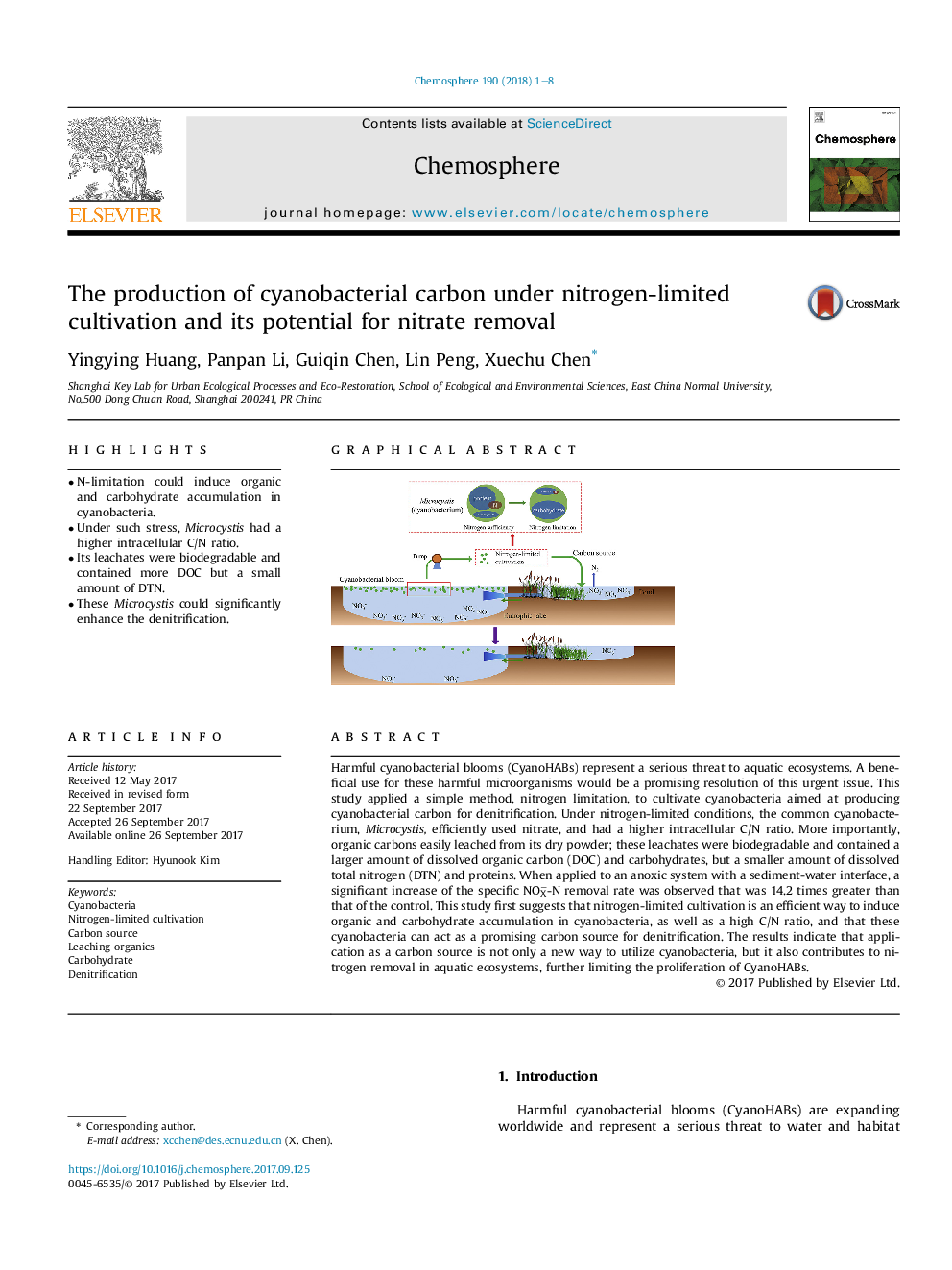| کد مقاله | کد نشریه | سال انتشار | مقاله انگلیسی | نسخه تمام متن |
|---|---|---|---|---|
| 5745758 | 1618781 | 2018 | 8 صفحه PDF | دانلود رایگان |
- N-limitation could induce organic and carbohydrate accumulation in cyanobacteria.
- Under such stress, Microcystis had a higher intracellular C/N ratio.
- Its leachates were biodegradable and contained more DOC but a small amount of DTN.
- These Microcystis could significantly enhance the denitrification.
Harmful cyanobacterial blooms (CyanoHABs) represent a serious threat to aquatic ecosystems. A beneficial use for these harmful microorganisms would be a promising resolution of this urgent issue. This study applied a simple method, nitrogen limitation, to cultivate cyanobacteria aimed at producing cyanobacterial carbon for denitrification. Under nitrogen-limited conditions, the common cyanobacterium, Microcystis, efficiently used nitrate, and had a higher intracellular C/N ratio. More importantly, organic carbons easily leached from its dry powder; these leachates were biodegradable and contained a larger amount of dissolved organic carbon (DOC) and carbohydrates, but a smaller amount of dissolved total nitrogen (DTN) and proteins. When applied to an anoxic system with a sediment-water interface, a significant increase of the specific NOXâ-N removal rate was observed that was 14.2 times greater than that of the control. This study first suggests that nitrogen-limited cultivation is an efficient way to induce organic and carbohydrate accumulation in cyanobacteria, as well as a high C/N ratio, and that these cyanobacteria can act as a promising carbon source for denitrification. The results indicate that application as a carbon source is not only a new way to utilize cyanobacteria, but it also contributes to nitrogen removal in aquatic ecosystems, further limiting the proliferation of CyanoHABs.
206
Journal: Chemosphere - Volume 190, January 2018, Pages 1-8
